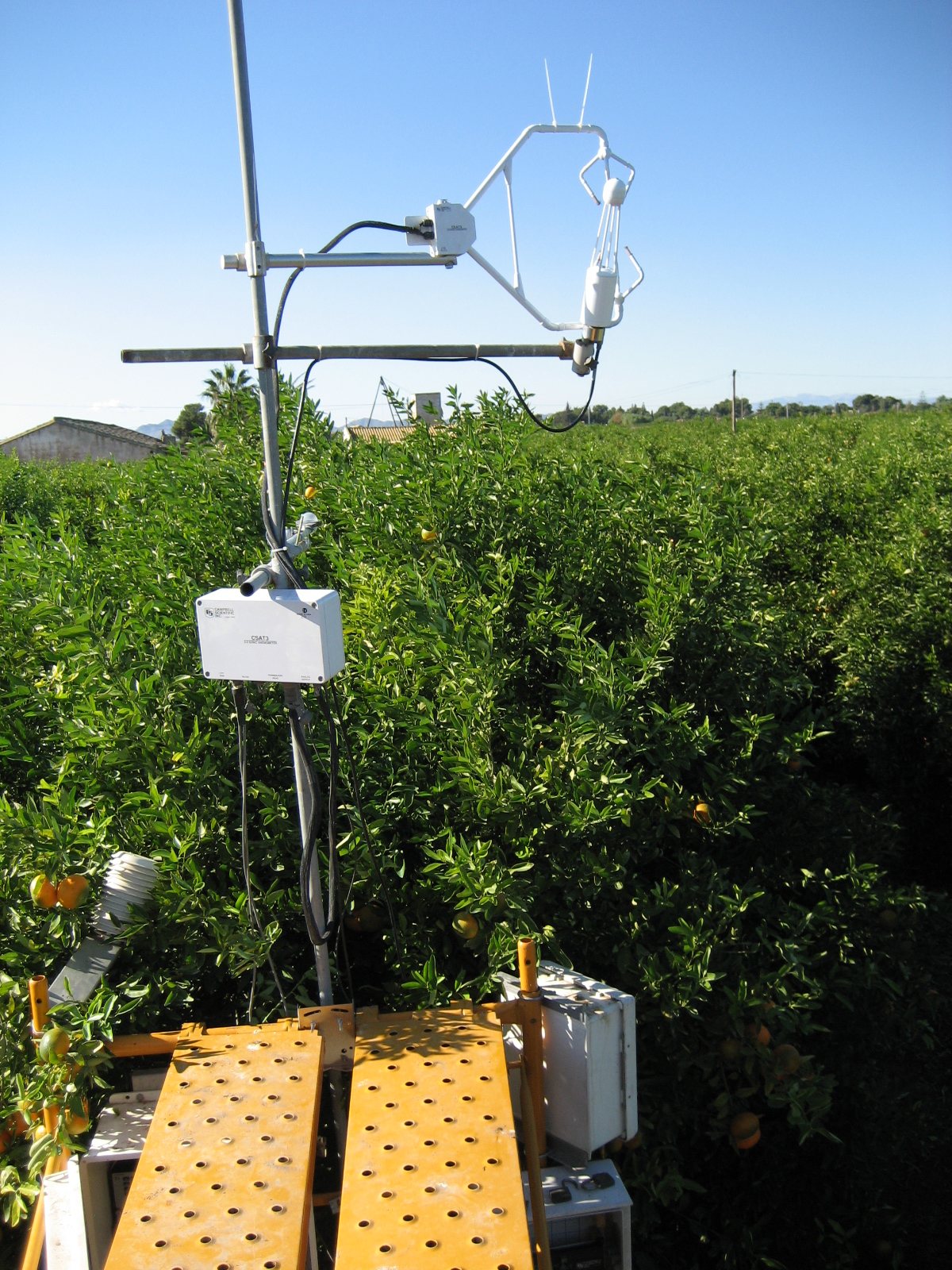During 5 years, the Agroforestry Engineering department of the Polytechnic University of Cartagena (UPCT) measured the water and carbon fluxes in three Citrus commercial farms located in the Campo de Cartagena (Murcia, Spain) using a combination of field and Eddy-covariance measurements and satellite observations. FutureWater supported this project and carried out the following tasks: (1) analyse the daily dynamics of water, energy and carbon in the selected pilot sites, (2) identify and quantify the influence of the main environmental drivers of water and carbon balance, (3) calibrate empirical relationships and production models for estimating actual evapotranspiration, and gross and net primary productivity.
Approximately 22 million tons of citrus crops, 20% of total world production, are produced in the Mediterranean region. Historically, Citrus-dominated agrosystems have been concentrated in the valleys where the most fertile soils are located and a higher and easier access to surface or groundwater is possible. However, over the last decades, the adoption of new technologies and irrigation strategies (pressurized irrigation and deficit irrigation techniques) has promoted the expansion of the cropped areas to less favorable locations. Currently there are more than 300,000 hectares of citrus in Spain.

Better quantitative knowledge on the actual water requirements and the environmental drivers that control the productivity and the carbon footprint of these agrosystems are required to secure the sustainability of these cropping systems in the Mediterranean region. For this reason, during 5 years, the Agroforestry Engineering department of the Polytechnic University of Cartagena (UPCT) measured using the Eddy-covariance technique the water and carbon fluxes in three Citrus commercial farms located in the Campo de Cartagena (Murcia, Spain).
The main objective of CITRIFLUX project is to quantify the water and carbon balance of Citrus orchards using a combination of field and Eddy-covariance measurements, and satellite observations. FutureWater supported this project and carried out the following tasks:
1) analyze the daily dynamics of water, energy and carbon in the selected pilot sites,
2) identify and quantify the influence of the main environmental drivers of water and carbon balance,
3) calibrate empirical relationships and production models for estimating actual evapotranspiration, and gross and net primary productivity, from field-based weather inputs, and satellite-based variables (greenness vegetation indices, albedo and land surface temperature).
Related publications
2017 - FutureWater Report 174
Water and carbon fluxes in irrigated citrus orchards assessed from satellite data
Contreras, S., J.E. Hunink, A. Baille

